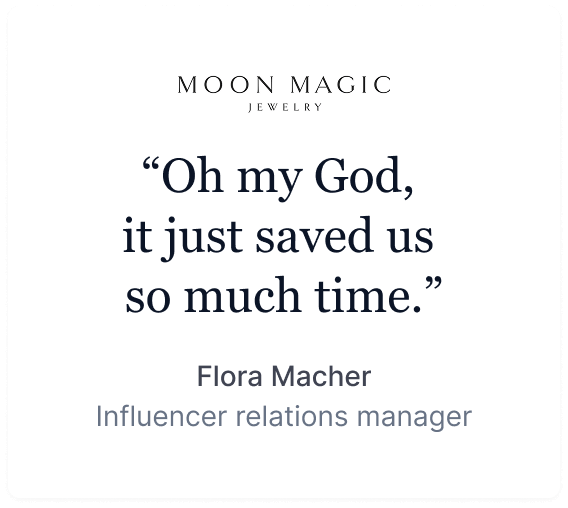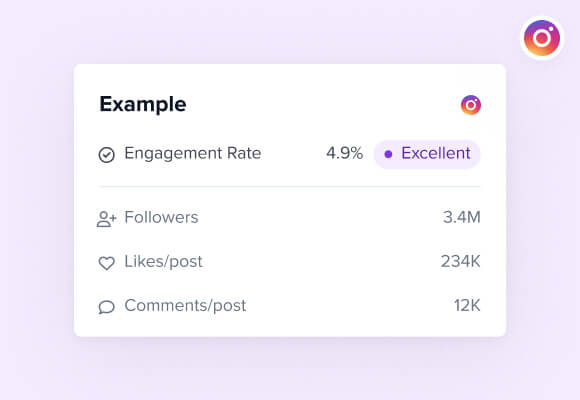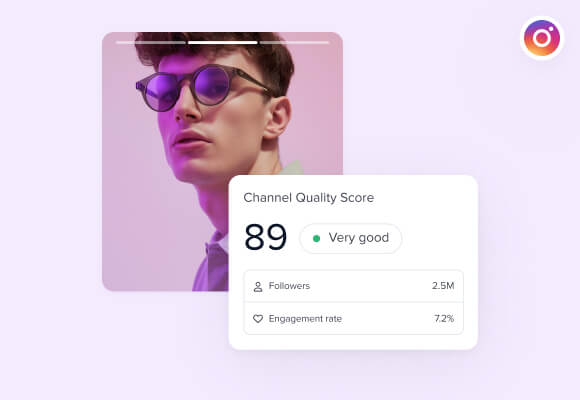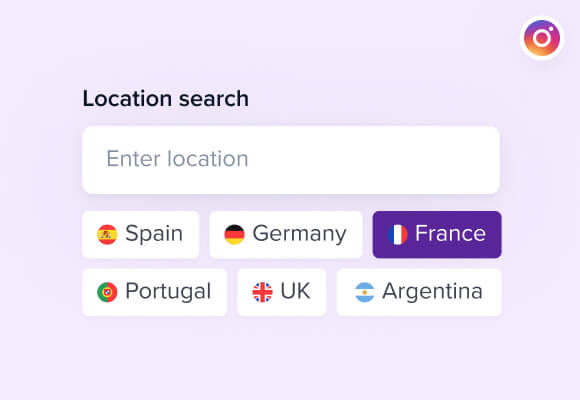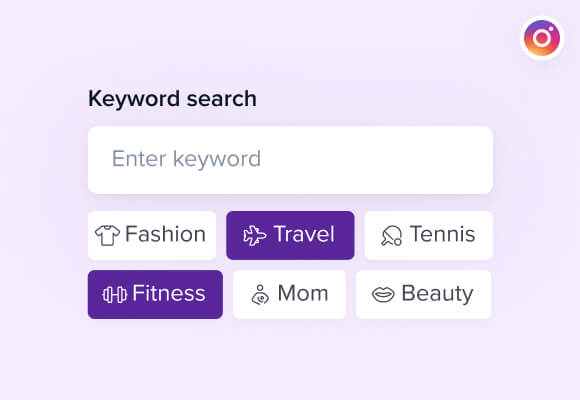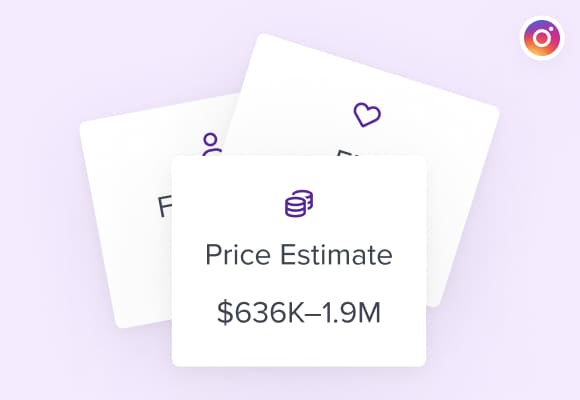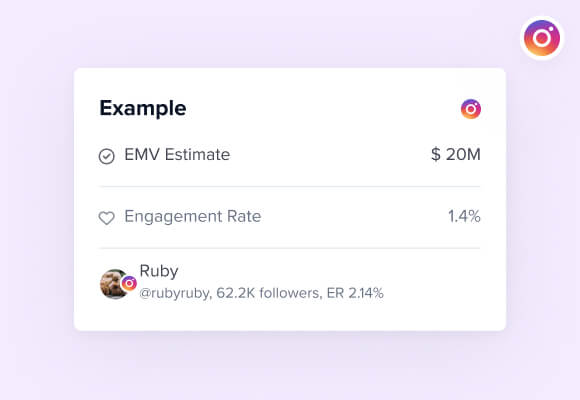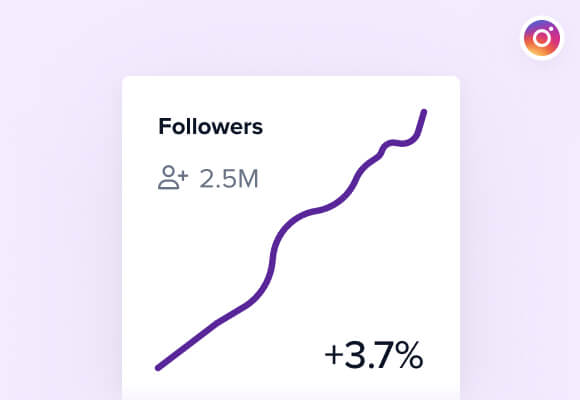Free Instagram Follower-to-Following Ratio Calculator

HypeAuditor’s Follower-to-Following Ratio Calculator helps brands and agencies assess the quality of any Instagram account. The follow ratio calculator can also be used to estimate the popularity of a certain Instagram influencer, as well as learn which accounts might be worth monitoring.
The follower-to-following calculator is a quick and easy way to estimate an Instagram account’s popularity. Determining the follow ratio is among the first steps any brand or agency takes when conducting due diligence on an influencer.
Instagram Follower-to-Following Ratio Calculator Questions
What is the Instagram Follower-to-Following ratio?
The Instagram follower-to-following ratio is the number of followers an influencer has to the number of accounts an influencer follows. It’s also known as an influencer’s “follow ratio” or an account’s “Instagram cool ratio.”
The follow ratio is a common measure for assessing the quality of an account. Generally, interesting Instagram accounts have more followers than accounts they follow.
What does your Instagram Follower-to-Following mean for brands and businesses?
Brands, agencies, and other industry professionals assume that a high follower count on Instagram will instantly result in more traffic, engagement, and conversions.
But before a brand or agency commits to a collaboration with an influencer, they conduct a deeper analysis into an influencer’s account. In addition to performance metrics like engagement and engagement rate, brands and agencies might use follow ratios to approximate the type of influencer an influencer is.
For example, a brand might determine that an influencer with a ratio of between 1:1 and 2:1 is a regular, everyday Instagram user who generally reciprocates a follow. In numbers, this means an account following 100 accounts might have anywhere between 100 and 200 followers.
The brand might then designate influencers with a follow ratio of 2:1 to 5:1 as micro-influencers. Such influencers generally have a substantial enough follower base to merit discussions for a possible collaboration. With such ratios, an account that’s following 100 other users would have anywhere between 200 and 500 followers.
A brand’s model might then designate follow ratios for mid-sized and large influencers. It might even indicate that accounts with a follow ratio of 15:1 or higher is a major influencer, celebrity, or viral star.
Are there any pitfalls to the Instagram Follower-to-Following ratio?
Brands and agencies often use Instagram follower counts to make their first impression of an influencer. As a result, many influencers do whatever they can to grow their followers.
It’s relatively straightforward to increase the number of followers that an Instagram account has. Some accounts increase their follower count organically by creating compelling or interesting content. Another tactic to attract new followers is paid advertising.
However, some accounts with dreams of becoming an influencer resort to more illegitimate means. Some accounts purchase fake followers or bots to artificially inflate their follower count. Another approach is to spam or “fake follow” accounts in the hopes that the account follows back.
How can you calculate your Instagram Follower-to-Following ratio?
In order to calculate your follower-to-following ratio, first check your account, then record both the number of followers (“Followers”) you have and the number of accounts you’re following (“Following”).
Once you have both numbers, divide Followers by Following. For example, if you have 1,000 followers and you follow 100 accounts, your follow ratio works out to be 10:1.
This is how you can calculate your Instagram follower-to-following ratio.
Does the Instagram Follower-to-Following ratio matter?
As a general rule of thumb, influencers with more followers (and by extension more popularity) than they’re following are considered to be more successful and interesting content creators. Brands and agencies can use the Instagram follower-to-following ratio as an initial filter to sort out any influencers that they deem too small (or too big) to work with.
That being said, the follow ratio is still primarily a vanity metric, similar to follower counts. It doesn’t provide any indication as to how well a collaboration will go with an influencer.
The more important question brands and agencies will seek to answer is how strong an influencer’s engagement and engagement rate are. Still, the follower-to-following ratio can affect certain business discussions and negotiations in the following ways:
- Influencers are often offered opportunities based on their number of followers
- Influencers might be paid more or less depending on the size of their follower-to-following ratio
- Follow ratios can impact perceptions of an influencer’s brand and competitiveness
One additional fact: the Instagram follower-to-following ratio only matters for accounts with under 100,000 followers. This is because Instagram caps the number of users that any one account can follow at 7,500. Anyone who attempts to follow 7,501 will see an error message. This limit on following is meant to reduce spam.
What is a good Instagram Follower-to-Following ratio?
There is no strict rule for what makes an excellent follower-to-following ratio. Strictly speaking, so long as an influencer has more followers than accounts they follow, it’s a good signal. However, there are a few signs to look for.
If the influencer is following more accounts than they have followers, this is an immediate red flag. It suggests that the influencer’s approach to gaining followers is following accounts before eventually unfollowing them, instead of creating compelling content.
Beyonce probably has one of the best (if not the best) follow ratios. She has an astonishing 331 million followers yet she follows exactly zero accounts. However, this is not realistic for most influencers.
In most cases, a good Instagram follower-to-following ratio is around 3:1. In other words, For every 3 followers you have, you are following one account. The higher the ratio, the better it is.
Some brands and agencies might establish their own criteria for what is or isn’t a good ratio. For instance, they might consider 3:1 to be average, while a good ratio starts at 10:1.
In any case, a 1:1 follower-to-following ratio is already undesirable. Anything under 1:1, like 0.5:1, can be considered bad, if not outright spam.
Why is the Instagram Follower-to-Following ratio so important?
The Instagram follower-to-following ratio demonstrates a certain degree of social status. Accounts that have more followers than individuals they follow can reasonably be considered a popular user.

